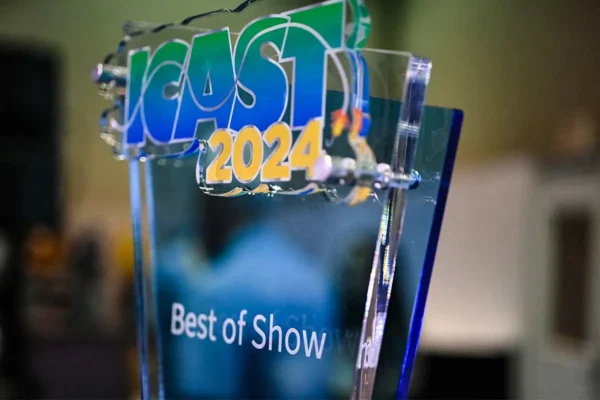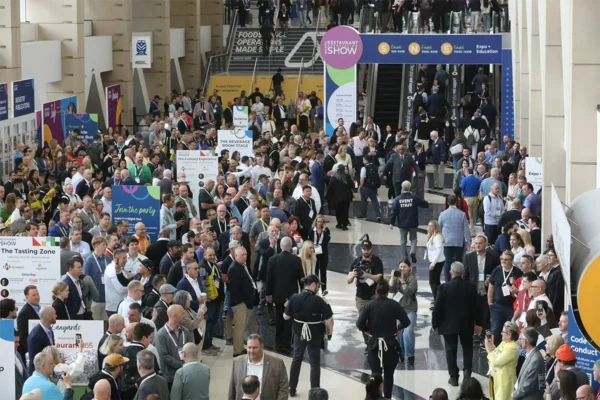With nearly three-fourths of smartphone owners using geosocial apps, according to the Pew Research Center, it’s time you joined the ranks of exhibitors experimenting with this crowd-pleasing technology.
When loaded onto a smartphone or computer tablet, a geosocial app, also known as a location-based mobile app, uses data from a satellite, cell-phone tower or wireless access point to zero in on the user’s present geographic location. When spotting that location, the apps are accurate to a distance of 15 feet.
Outside tradeshows, geosocial app users love them for wayfinding, shopping and socializing. Inside tradeshows, exhibitors are taking advantage of geosocial apps to coax attendees to their booths, where attendees can “check in” to receive giveaways or special offers. In the course of checking in, attendees “ping” their social networking friends, stoking brand awareness and creating a powerful ripple effect that can drive still more traffic to the booth.
“Geosocial can expand the boundaries of your physical space at a tradeshow,” said Eric Lukazewski, marketing director for Elgin, Ill.-based exhibit house Echelon Design. “Geosocial lets you have a conversation with customers that isn’t at the mercy of the confines of a 10-by-10 foot or 10-by-20 foot space. With it, you really have unlimited space.”
While the same could be said of other forms of social media marketing, geosocial is different.
“As opposed to other social media marketing messages, by their very nature the geosocial marketing messages you broadcast require attendees to visit your booth to benefit from whatever incentive you offer,” said Lukazewski. “I like to use the analogy of the fisherman: You’re casting out a message with the goal of luring your audience into your space with the message. Social media is great for having conversations outside your booth. Geosocial is great when you want the conversations to be intimate ones.”
But simply blasting emails, Tweets or text messages that beg attendees to visit you won’t cut it.
“Broadcasting ‘Here we are, come see us’ provides little or no value to attendees,” said Lukazewski. “You need to wrap geosocial around a marketing campaign and really make the campaign valuable to attendees by tying check-in to a giveaway or to eligibility for an after-party.”
For such a campaign to work, knowing your audience is mandatory.
“The biggest single factor is the attendee profile,” said Lukazewski. “At a healthcare show versus a CES show, you’re going to reach completely different audiences who use completely different sets of social media tools.”
Millennials in general are receptive to exhibitors who use platforms, like Twitter and foursquare, Lukazewski says. Whereas older tradeshow attendees favor LinkedIn and Facebook.
“A lot of exhibitors will immediately gravitate toward a particular tool because they’ll see statistics that say consumers are spending X amount of time with it,” said Lukazewski. “But that’s a mistake. Understanding the demographic of the tradeshow is really critical. You have to ask: Is the audience at the show really using the tool?”
Lukazewski recommends, in addition to specific organizers’ findings, two sources for useful research about tradeshow attendees’ use of social and geosocial media: the Dallas-based Center for Exhibition Industry Research and Cambridge, Mass.-based Forrester Research.
Before choosing a geosocial app for any campaign, you also want to consider what mobile platforms on which it runs.
“You don’t want to choose an app that runs, say, only on Android when a large part of your audience uses Blackberry,” said Lukazewski. “It goes again to understanding all the demographic variables, not only who attendees are but what type of devices are they using.”
Keeping your campaign simple also is mandatory, given the variety and complexity of the geosocial apps available today, Lukazewski notes. He cites one recent prize-competition produced by an exhibitor as an example.
The exhibitor sent attendees preshow emails and collateral material announcing that it planned a check-in at its booth using Foursquare. Every attendee who checked in during the show would win a prize. The attendee who checked in the most times would win a grand prize and be proclaimed “mayor.”
“Simple baseline techniques work if you put the right amount of effort into preshow promotion,” said Lukazewski. “It’s naive to think you can broadcast messages saying: ‘Hey, check in at our booth,’ because the attendees may not have Foursquare on their phones. You need to let the audience know ahead of time you’re running a campaign and educate them. If attendees don’t have Foursquare, you tell them how to download and use it so they come to the show prepared.”
Bob James is vice president of marketing for ITN International, an event-analytics company known for pioneering the use of NFC (short-range wireless) within the exhibitions industry. With operations in China, France, the U.K. and the U.S., ITN International provides exhibitors, more than 150,000 of them, with innovative lead-management solutions based on NFC.






























